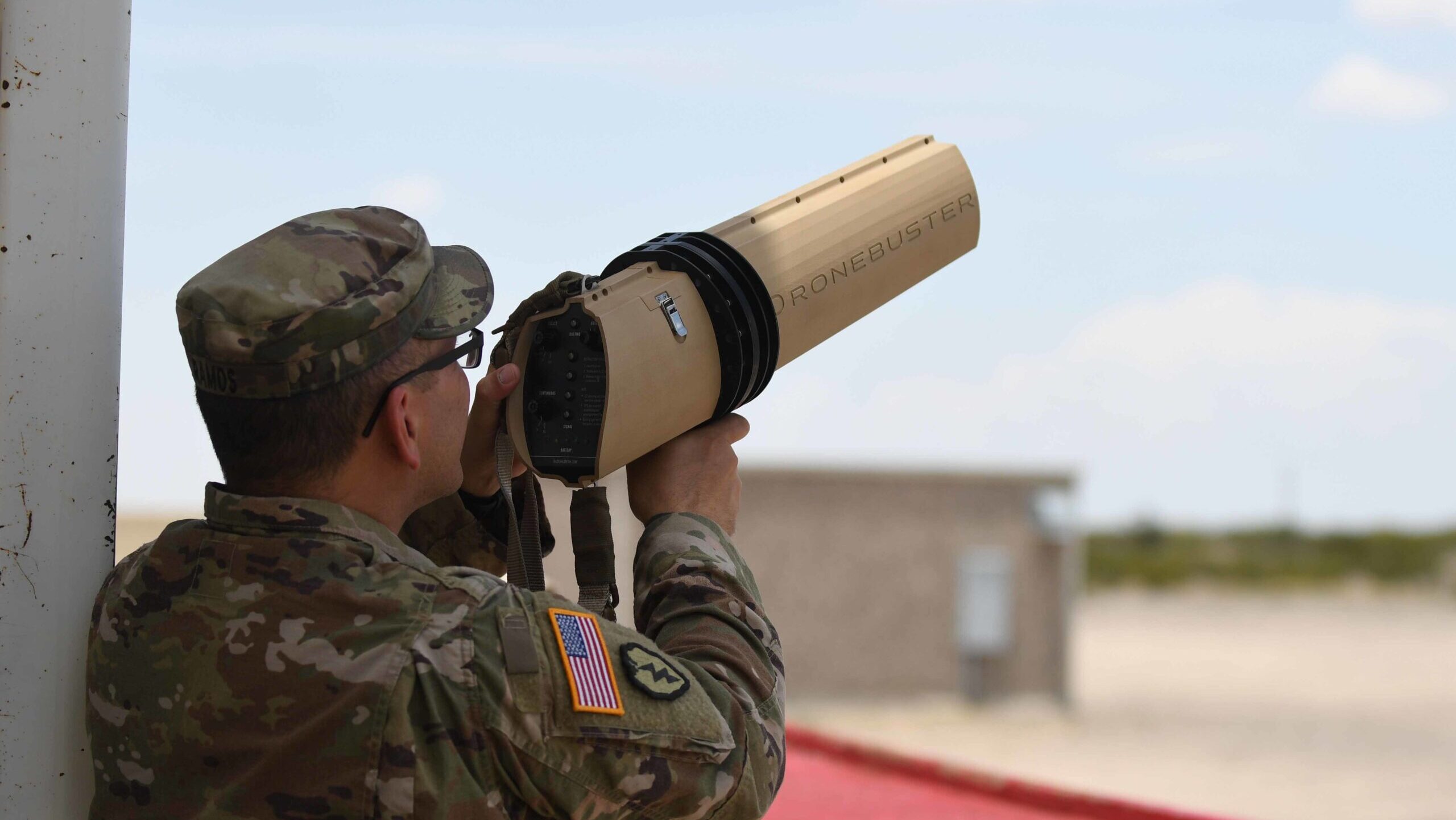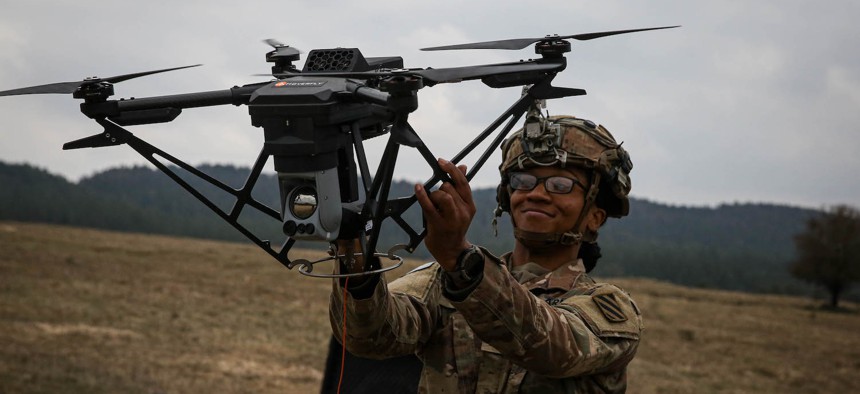We really want it, but not enough to put it in our budget. Just give us some extra money. The Army has submitted a $2.2 billion unfunded priorities list to Congress for fiscal year 2025, which places a heavy emphasis on counter UAS, UAS and integrated air and missile defense. The list, first obtained by Politico, includes more than $400 million combined for counter UAS systems.
Defense Budget: The Storied Unfunded Priorities Lists
Key Points
- Congress requires select uniformed and civilian leaders in the Pentagon to submit unfunded priority lists (UPLs) each year shortly after the president’s budget is released. In performing its constitutional responsibilities, Congress uses the UPLs, as the best judgment and advice of senior leaders, to understand risk inherent in the defense budget.
- This year’s UPLs total $16.9 billion and are notable in part for what they do not include: requests for assistance in addressing inflation that was not part of the budget request.
- As in previous years, investment accounts continue to dominate the UPLs, providing continuing evidence that defense needs both capacity and capability to perform its missions
Army puts drones front and center in newly obtained budget docs - Defense One
What do Army leaders want—but not quite enough to include in their formal 2025 budget request? Aerial drones, counter-drone tech, and ground robots in formations, according to the service’s “unfunded priorities” list, obtained by Defense One Friday.
Service leaders have repeatedly said they aim to put more experimental technology in the hands of units for testing, so it’s no surprise that the list includes $10 million for small drones for companies and $25 million for the acquisition of commercially available drones for infantry brigade combat teams.
Army Chief of Staff Gen. Randy George has made acquisition of commercial drones a particular priority, with news of the cancellation of the Future Attack Reconnaissance Aircraft accompanied by the announcement that the Army was phasing out existing drones in favor of commercial ones.
Talking with soldiers at a recent training event, George said troops were eager to get more small drones into their units.
“Most of the complaints [related to drones] were, how can I have this right now?” George said during an interview with Defense One for the State of Defense. Training for some of the drones can take as little as a day, he added.
“We're going to see robotics inside the formation, on the ground and in the air,” George said.
The Army can currently buy commercial drones off of the Blue UAS list, a list of drones vetted for government use. Such drones, however, can be eight to 14 times more expensive than those sold by Chinese companies, the Financial Times reported in 2021.
The Army is hoping that increasing demand will drive down cost, though, said George. “I think once we start to show a demand for more of these, and people are producing them, the prices will continue to come down,” the general said during the State of Defense event.
The Army also hopes to push extra cash toward its program to field one-way attack drones to infantry, dubbed the Low Altitude Stalking and Strike Ordnance, or LASSO, program. The list includes $10 million for LASSO.
Doug Bush, assistant Army secretary for acquisition, told Defense One at AUSA that the Army had ordered more than 100 Switchblade 600s for testing under the LASSO program. The Army budget request for fiscal year 2025 includes a request for $120 million worth of LASSO program drones.
The unfunded list also includes $26.5 million for Short Range Reconnaissance and $34 million for Medium Range Reconnaissance programs. Dronemaker Skydio entered the final phase of testing in the Army’s Short Range Reconnaissance program in January.
The list includes $449 million for counter-drone capabilities for force protection and $292 million for short- to long-range air defense amid frequent drone attacks on U.S. forces in the Middle East and the rise in drone warfare in Ukraine.
Half of the counter-drone capabilities, worth $185 million, are for interceptors. These interceptors may be Raytheon’s Coyote drone interceptors, which the Army has praised as effective in destroying the drones that regularly attack military bases in the Middle East.
The base budget for fiscal year 2025 calls for $117 million in Coyote interceptors, which can cost $125,000 per unit.
Other counter-drone sections under the list’s force protection category include $4.5 million in research and development for Anduril’s Roadrunner-M drone interceptor. It also includes $91 million for anti-air Stinger missiles and $10 million for a previously unidentified program called the “Family of Counter-sUAS system” or FoCUS.
The list also includes a further $84 million in funding for the Joint Counter Small Unmanned Systems University, which teaches soldiers to use hand-held counter-drone jammers and other counter drone devices.
The list also pressed forward with Army plans to bring more robotics into Army units, with $55.5 million requested for human machine integration, a category that includes using robotic, gun-toting vehicles to make first contact with enemy forces. A separate category requests $69.5 million for human machine integration experimentation with the Next Generation Combat Vehicle program.
Earlier in March, soldiers in an Army robotics and autonomous systems platoon in the 82nd Airborne division demonstrated attacking an enemy-held town with a mix of drones and robots at the Army’s Fort Irwin National Training Center.
A separate line calls for $16 million for the Silent Tactical Energy Dismount (STEED), a robot used to carry equipment and evacuate casualties.
Amid increasing use among Starlink and other low earth satellite orbit systems in Army units, the proposed
budget also requests $4 million for “proliferated low earth orbit” in
the tactical network category.
Other items on the list include $98 million for Precision Strike Missiles (PRSM) and $138 million for atriot Advanced Capability Three (PAC-3) missiles.
Army, CENTCOM ask Congress for spending jump for counter-drone mission
 |
| Soldiers from 5th Armored Brigade, First Army Division West, developed a course of instruction to counter the threat of commercial, off-the-shelf unmanned aerial surveillance vehicles at McGregor Range Complex, N.M. in June 2019. (Staff Sgt. Mylinda DuRousseau) |
WASHINGTON — With a deteriorating security situation in the Middle East made worse by sporadic if potentially deadly drone attacks on US installations, both the US Army’s and US Central Command’s wishlists for fiscal 2025 prominently feature requests for more money for systems to shoot down those aerial threats.
Earlier this month the White House requested $849.8 billion in discretionary funding for the Department of Defense in fiscal 2025. As is law, though, the services and combatant commanders provide lawmakers with a list of areas and programs they could use additional dollars, known as the “unfunded priorities list.”
For its part, the Army said its proposed $186 billion budget request for next year could use some help to the tune of another $2.2 billion, according to documents provided to lawmakers and reviewed by Breaking Defense. Its top five unfunded priorities revolve around “force protection” with counter-unmanned aerial system (cUAS) platforms claiming the top three spots. The first two cUAS spots total $349 million but the Army’s list — marked with “controlled unclassified information” — does not detail to which systems those dollars would be directed.
It does list Anduril’s Roadrunner-Munition (Roadrunner-M) cUAS as its third unfunded priority, with a $4.5 million price tag for additional developmental dollars. Rounding out the top five are $91 million to purchase Stinger missiles and $10 million for the Low Altitude Stalking and Strike Ordnance (LASSO) program.
Other notable items on the Army’s wishlist include $63 million for its new Command and Control Next (C2 Next) initiative and various military construction programs.
US Central Command, meanwhile, wants an additional $450 million on top of its proposed budget and made clear cUAS is a priority.
“The Central Region is facing its most volatile situation in the past half century,” CENTCOM commander Army Gen. Michael Kurilla wrote in a letter addressed to one lawmaker. “A convergence of crisis and competition erodes the security situation across the region as Iran and its proxies create a chaotic landscape which invites extremism and destabilization that invites economic, military, and diplomatic exploitation by China and Russia.”
RELATED: ‘Extremely concerned’: American generals raise alarm over Iran’s tightening ties with Russia, China
While Kurilla’s letter, obtained by Breaking Defense and first reported by Politico, doesn’t detail exactly how he would use an additional $450 million, it notes it would be funneled towards cUAS, force protection, intelligence, surveillance and reconnaissance (ISR), and innovation-related programs.
Since the US threw its support behind Israel’s war on Hamas after the militant group’s Oct. 7 attack, there has been a proliferation of attacks on US facilities through the CENTCOM area of operations, including a drone attack on Tower 22 in Jordan that killed three Army soldiers.
Meanwhile at sea, since Nov. 19, 2023, Houthi militants based in Yemen have also “attacked or threatened” US Navy and commercial vessels 107 times, Army Maj. Pete Nguyen, a spokesperson for the Office of the Secretary of Defense, told Breaking Defense today.



No comments:
Post a Comment